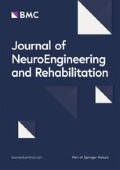Since this is for chronic, at least in the US insurance would have long ago dropped you. So useless for most people.
Effects of intensive arm training with the rehabilitation robot ARMin II in chronic stroke patients: four single-cases
Abstract
Background
Robot-assisted therapy offers a promising approach to neurorehabilitation, particularly for severely to moderately impaired stroke patients. The objective of this study was to investigate the effects of intensive arm training on motor performance in four chronic stroke patients using the robot ARMin II.
Methods
ARMin II is an exoskeleton robot with six degrees of freedom (DOF) moving shoulder, elbow and wrist joints. Four volunteers with chronic (≥ 12 months post-stroke) left side hemi-paresis and different levels of motor severity were enrolled in the study. They received robot-assisted therapy over a period of eight weeks, three to four therapy sessions per week, each session of one hour.
Patients 1 and 4 had four one-hour training sessions per week and patients 2 and 3 had three one-hour training sessions per week. Primary outcome variable was the Fugl-Meyer Score of the upper extremity Assessment (FMA), secondary outcomes were the Wolf Motor Function Test (WMFT), the Catherine Bergego Scale (CBS), the Maximal Voluntary Torques (MVTs) and a questionnaire about ADL-tasks, progress, changes, motivation etc.
Results
Three out of four patients showed significant improvements (p < 0.05) in the main outcome. The improvements in the FMA scores were aligned with the objective results of MVTs. Most improvements were maintained or even increased from discharge to the six-month follow-up.
Conclusion
Data clearly indicate that intensive arm therapy with the robot ARMin II can significantly improve motor function of the paretic arm in some stroke patients, even those in a chronic state. The findings of the study provide a basis for a subsequent controlled randomized clinical trial.

No comments:
Post a Comment